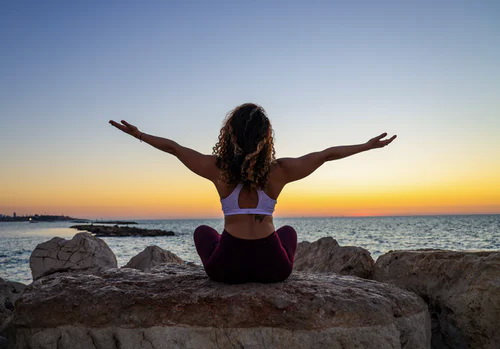Yoga today is all the rage. It is a subject that excites people’s curiosity and enjoys much popularity. This is especially so since the asanas (exercises) and pranayamas (breathing techniques) that owe their origins to ancient Indian wisdom have proved beneficial in promoting holistic health and mental peace as also in developing personality. In this article we will discuss Marjaraasana – the cat pose.
Process: Sit on your haunches with the knees and toes on the ground. Keep the palms on the floor in such a way that the distance between them is about the same as that between the shoulders, i.e. equal to the width of the back. Keep the distance between the palms and the knees about the same as that between the shoulders and the hips, i.e. equal to the length of the torso. The distance between the knees should be the same as the width of the waist. Turn the toes back so that the soles face upward. The distance between the soles should be the same as that between the knees. Relax the muscles in the trunk region and let the trunk descend under gravity. At the same time, let the neck and head curve backward as far as possible. Relax the stomach and close the eyes. Direct your attention to the entire body and practise conscious differential relaxation. Keep the mind engaged in pranadharana (consciousness of breath). This is the final posture of marjaraasana maintain it according to capacity.
An extension of the above posture can be attained in the following manner: staying in the final posture obtained above, open your eyes. Move the palms about 10-15 cms towards the knees. Curve the back upwards so that it shapes like an arch. Relax the neck and hang the head down. Draw the chin towards the chest and relax the abdomen, practice differential relaxation and then do prandharana. This is the final extension posture of marjaraasana- maintain it according to capacity.
Releasing the asana: Start by lowering the right leg by bending it at the knee, then rest the knee on the floor. Lower the head and make the back parallel to the ground, loosen it up and relax.
Benefits: The spine becomes flexible and supple; it helps to correct the functional defects of the back and spine. The health of the organs in the torso improves. You are relieved of backache and pain in the neck resulting from exertion. It also soothes the neck muscles and the lumbar region of the spine and invigorates the spinal nerves, improves blood circulation in the abdominal region thereby making digestive, respiratory and excretory processes. This asana is also useful in treating respiratory disorders.
Warning: The reader of this article should exercise all precautions before following any of the asanas from this article and the site. To avoid any problems while doing the asanas, it is advised that you consult a doctor and a yoga instructor. The responsibility lies solely with the reader and not with the site or the writer.





















